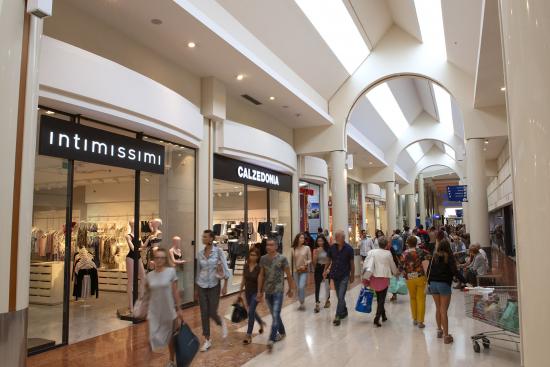Focus on new consumer trends, to make the most of what shopping centers offer

The re-openings have helped retailers return to pre-pandemic sales, but have also revealed new consumer trends.
While it’s clear that the shopping center has regained its role, with online sales back to more typical levels, a few new trends are taking shape with respect to certain types of consumption. High inflation, digital technologies and the persistence of smart working are, in fact, causing profound changes in shopping frequency and the choices of goods and services purchased inside shopping centers.
IGD monitors and analyzes these phenomena in order to be ready to adjust the merchandise and tenant mix quickly, increasingly more convinced in the validity of its business model, but also increasingly more focused on providing new solutions in this phase of change.
Let’s find out more about these issues by asking Roberto Zoia, IGD SIIQ SPA’s Director of Asset Management, Development and Network Management, a few questions.
What behaviors have you seen in the shoppers at IGD’s centers during the first part of the year?
Beginning in May, when the use of protective masks was no longer mandatory, people began to visit shopping centers and to spend again. Retailers’ sales are above pre-pandemic levels (relative to May 2019) even if footfalls are still below historical levels. The analyses we have made of our shopping centers show that it isn’t that we have few customers than before, but simply that in the new environment the customer makes fewer shopping trips in one month and spends more each time.
What impact have these new behavioral patterns had on your business?
First, let’s look at food services, namely bars and restaurants, which are recovering but are still experiencing difficulties. It’s clear that if the customer visits the shopping center less, the consumption of coffee and meals in one month will drop. The continuous and prevalent use of remote working also affects lunch hour traffic. A second characteristic that has become quite clear in this new phase is the preference for proximity: this means that shoppers have reduced the number of trips to the shopping center that they make in one month. If the customer needs to travel 30-40 kilometers to reach the closest shopping center, he/she will go less and make as many purchases as possible at the closest center.
People come less often, but they have returned. So, we have proof that the shopping center is not an obsolete model?
The end of the Covid-19 crisis marked the return to in-person shopping: this is a fact.
When the shopping centers were able to fully reopen, they outperformed online sales. We all continue to book our travels online, but we went back to trying clothes on in the store and enjoying the shopping experience. On the other hand, brands like Zara have begun charging for the shipment of returns: another way in which buying online, with the idea that you can return your purchase, has become less appealing.
What signals have the recent retail real estate sector deals given us?
I would say that there have been some very clear signals. There is a lot of appetite for deals involving supermarkets and retail parks. In the last six months in the UK, the deals involving neighborhood centers have basically tripled. In-person shopping is by no means a thing of the past as some liked to believe. The numbers published by the e-commerce players show that sales are falling, above all in areas in which penetration as a percentage of total sales had peaked.
How has the pivot to digital affected the retailers in your shopping centers?
The brands who adopted an omnichannel strategy were rewarded, as today they are the ones recording the best performances in terms of in-person sales. The numbers for the electronics and houseware sectors provide us with very clear signals in this regard.
What impact has the high level of inflation had?
Without a doubt the rising energy costs force families to rethink their budget and spending habits. The increase in the price of gasoline also has a significant impact on transportation costs to and from the shopping center which forces families to limit the number of shopping expeditions it makes in one month.
Has inflation impacted the sales of the retailers?
The sales figures for the last few months clearly reflect inflation to a certain degree as a few products, like food were purchased and resold at rising rates as new products arrived. This discussion is also valid, to a lesser degree, for other categories of merchandise like clothing as purchases are made two seasons ahead of time: the retailers purchased the products that are in the stores today when inflation was much lower than it is now.
How are the end-of-the-season sales going?
The weekend during which the sales were launched was not very impressive. On the one hand, the good weather encouraged people to go to vacation spots, while on the other hand, in the first week of July in Italy there was a peak in contagion with more than a million people forced to quarantine. Even if the numbers have become more encouraging, we will only be able to understand how the sales went at the end of the season. The fact that our shopping centers near the beach are reporting very good performances, above the average of our Italian portfolio, to a certain degree confirms that it’s likely that many people are using their second homes or seasonal rentals more, thanks also to the use of flexible and remote working formats.
What is IGD’s view of the phenomena driving the new consumer trends which is penalizing food services and small merchants?
Let’s first remember that restaurant services represent a small percentage of our total GLA. We never created enormous food courts in our centers when many were and today, we are benefitting from this choice. In general, IGD is responding to the new trends by being a careful retail strategist which is why we have been quick to adjust our tenant mix. It’s very clear to us that the demand for Hawaiian poke bowl could be substituted by new trends: we are, therefore, ready to dismantle and reassemble a significant number of stores during the year.
ShareThe most important thing is to carefully analyze behaviors, understand change and act quickly. In this sense, we have demonstrated to have a reassuring track record.





